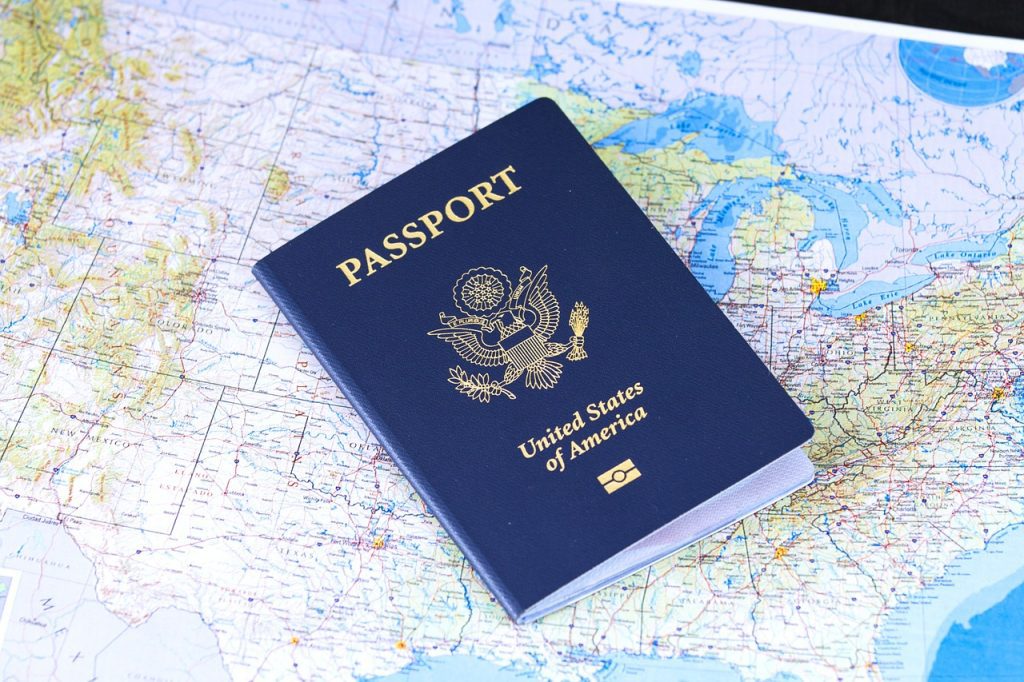
Europe has always been a popular destination for American travelers. A survey from August 2023 shows that around 12 million people flew to Europe from the US in the first half of the year. Are you planning to visit France, Germany, Greece, Italy, or another European nation in 2025?
You may have some questions about the legal requirements to travel to Europe from the USA, especially if a trip to the EU is imminent in the near future. It’s essential to know about ETIAS for people planning a short-term trip to a nation west of the Atlantic. That’s why we’ll answer all of your questions about ETIAS. Do you need a visa to go to Europe after ETIAS? When will ETIAS finally be implemented?
So, let’s discuss ETIAS travel authorization in detail and determine which documents you need to enter Europe starting next year. But first, let’s explore the history and evolution of EITAS in more detail.

What is ETIAS?
You may wonder what the major ETIAS requirements for US citizens for EU-bound travelers in 2025 are. However, we should discuss the concept behind this authorization system before looking into ETIAS registration in depth.
You’ll also learn a few reasons why ETIAS is a good step taken by the EU.
Europe’s share of global tourism is very high, and this beautiful continent attracts visitors from many parts of the world. However, visitors with pleasant intentions aren’t the only ones attracted to it. So, the European Union came up with the European Travel Information and Authorization System (ETIAS) to scrutinize every person entering the Schengen Area from visa-exempt countries like the United States.

However, it’s neither a visa nor does it guarantee entry into Europe. It’s simply an authorization system, a kind of security system. It provides European nationals with an extra layer of security from terrorists and other crime-oriented individuals. But it offers numerous benefits to US citizens, such as:
- It stays valid for three years.
- You can enter thirty European nations.
- The registration process is fast and convenient.
- You’ll find it linked electronically to your passport.
- ETIAS makes Europe a safe destination for tourists, too.
Let’s see how ETIAS has evolved throughout history and when it’ll become a reality for EU-bound travelers.
A Brief History of ETIAS
ETIAS was proposed for the first time in 2016. It took ETIAS two years to become official (according to Regulation 2018/1240 of the European Parliament). If you’re feeling uncomfortable about ETIAS, don’t forget that the US already has an equivalent called ESTA to process travelers from other countries.

Are you worried about ETIAS? Don’t fret; this new requirement isn’t in effect yet. Right now, ETIAS is just a proposed system that was supposed to come into effect in 2024. However, it’s been delayed and will be implemented in 2025, possibly before summer. These delays shouldn’t give you false hope, however. If you plan to travel to Europe from America, be prepared for ETIAS procedures. Let’s look into some special considerations of ETIAS, i.e., certain situations where US travelers might not need it:
- Get an e-passport if you want to travel to Europe because it’s mandatory for the ETIAS process.
- If you’re also a citizen of a European nation, then you don’t need ETIAS to travel to the Schengen Area.
- Unless you’re a green card holder with a passport issued by an ETIAS-eligible country (like the US), you must apply for a Schengen visa.
- ETIAS is supposed to be for short-term stays (less than 90 days). If you want to travel to Europe for a longer period, you’ll have to apply for a different kind of visa.

The ETIAS application process costs about €7 (or 7.53 USD) for people aged between 18 and 70 (no fee for people younger than 18 or older than 70). It takes a few weeks to process your information (but, in rare cases, you may have to wait for three months).
If you want to pass the ETIAS check quickly, learn the requirements for this process. That’s what we’ll discuss in the next section.
ETIAS Key Requirements for EU-Bound US Travelers
We can explain the key requirements for ETIAS for Europe-bound American travelers in two parts. First, you need to collect the required documents (and translate the ones that need to be rewritten in another language). Then you need to know what sort of personal information the European officers will ask to give you the thumbs up for a trip in the heartland of the Schengen Area.
Documentation Requirements
You should fulfill these requirements to travel to Europe from the USA before gathering the right documents:
- You are a US citizen visiting Europe for 90 days.
- The purpose of the visit is transit, business, or tourism.

You need to have the following “documents” to get ETIAS approval as quickly as possible:
- A valid email address to receive the approval message
- A valid US-issued machine-readable passport
- A credit or debit card to pay the required 7 EUR fee
Information Requirements
When you’re filling out the ETIAS application form, it’s vital to give officials this info:
- Name
- Gender
- Date of birth
- Passport number
- Your education information
- Your employment information
- Contact details
ETIAS Process for American Citizens
Americans are in a highly favorable position to pass ETIAS and get fast approval once this system comes into effect in 2025 (and not delayed until 2026). You should check your eligibility first, which only refers to these four conditions:
- Age: It’s open to people of all ages, so you don’t have to worry about this condition.
- Nationality: It’s only available to people with visa-free access to the Schengen Area. As a citizen of the US, you pass this condition as well.
- Passport: You need a machine-readable passport that stays valid for as long as you plan to stay in Europe.
- Purpose: You should be planning to stay in Europe for up to 90 days in a 180-day period. It covers tourism, transits, business trips, and medical visits.

The entire process is very flexible and doesn’t take much time. It consists of the following steps:
Step #1: Prepare Your Documents
The first step is always document preparation. You will have to determine which documents need to be translated. Look for ID card translation services so you can accelerate the approval process.
Step #2: Apply for ETIAS
Then you should move on to filling out the online application. It may ask you to answer health and security-related questions. You’ll fill in travel details and provide personal information. Respond to all these questions honestly and accurately to prevent any delays in the approval process.
Step #3: Pay the Small Fee
Pay the small fee required from adults aged 18 to 70. This €7 fee will put your application in the next phase.
Step #4: Wait for Approval
Submit your application, and if everything goes well, you’ll get the confirmation via email within a few minutes. If there’s a document missing, then you may have to wait four weeks for the approval to arrive.

Step #5: Prepare for the Trip
In the end, you should prepare for your trip abroad and decide when you’ll leave for Europe. You can travel to Europe from the US in the next three years because that’s how long your ETIAS will stay valid.
If you still have any questions about ETIAS, then visit the official website to learn more.
Conclusion
Let’s do a brief recap of everything we’ve learned so far. You should apply for ETIAS if you want to travel to Europe for less than 90 days on your American passport. If you meet the required health and security standards, just pay the $7.53 fee and apply for ETIAS.
The whole process takes about 96 hours (or several months in rare cases). You’ll get an email confirming that your ETIAS application has been approved.
However, you can prevent such delays by preparing the required documents. Get them translated to avoid any mishaps. Contact TranslateSwift for accurate, certified passport translation and other tasks. A document translated by these professionals will have a 100% approval rate and guarantee quick entry into Europe.

FAQs – ETIAS for US Citizens
Who manages ETIAS and its various requirements?
ETIAS is managed by eu-LISA or the European Union Agency for the Operational Management of Large-Scale IT Systems in the Area of Freedom, Security and Justice.
Should I print my ETIAS approval?
Yes, you may print your ETIAS when traveling from the US to Europe. However, it’s not mandatory since your ETIAS will be digitally linked to your passport.
Do you need a visa to go to Europe?
Yes, you’ll have to apply for a proper visa to visit any EU nation for longer than 90 days. Check the major work visa requirements and then apply for a Schengen visa.
Do I need ETIAS if I already have a visa?
If you have a visa issued by a Schengen member state, then you don’t need ETIAS. In this case, you may apply for ETIAS if your visa is about to expire.
Can I use ETIAS to study in Europe?
You can use ETIAS to enroll in short-term, recreational courses that don’t last more than 90 days.











